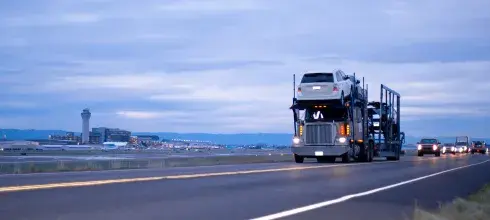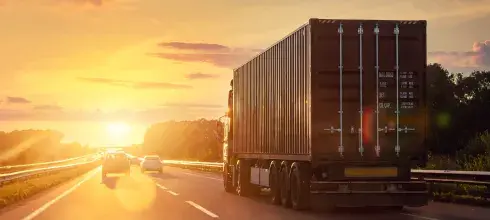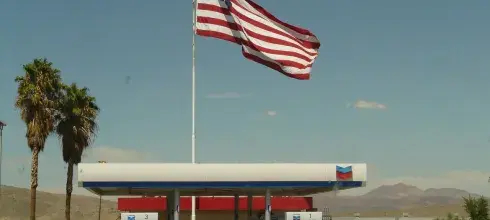A common worry among people who want to ship their car is damage. It’s a very rare occurrence, but you should be aware of it. Even the most capable auto transport provider will have to deal with it from time to time.
It could be the weather that throws a curveball, an accident that is the fault of another driver, or hail that could damage your vehicle. Debris blown on the wind could pelt your car, or you could have mistakenly picked one of the less reliable car shipping companies out there.
In this post, you’ll discover what to do if your car is damaged during the car shipping process and understand the importance of car shipping insurance coverage.
Protect yourself from the very beginning
There are things you can do to be proactive. Dealing with vehicle damage starts before any damage occurs.
Before handing over your car keys to the carrier, thoroughly check your car and document the condition of your vehicle. Ensure all external parts are functional and look for any cosmetic issues and the interior of your vehicle for damage. Close all windows and sunroofs. Check any moving parts are operational, for example, windshield wipers, wheels and tires, headlights, and similar systems. Record any issues and take lots of photographs of your vehicle from several angles.
When the carrier arrives, the driver will also conduct a thorough inspection of your vehicle before they load it onto the trailer. They will also be checking the condition of your vehicle, whether it’s moveable, and whether it’s a good fit for their trailer.
You might feel that the driver is being too picky, but don’t be offended. An overly thorough driver is a good thing. You should be more worried if the driver makes a quick, passing inspection. A responsible driver will look closely at their cargo before loading it. They might also decide to take pictures of the existing damage, so there’s no confusion and clear proof that damage was there before your car was loaded.
After the driver has completed their inspection, you may have to hash out your notes. You both must agree to the damage record. Once you agree, you’ll both sign the Bill of Lading. This is an agreement regarding the vehicle’s condition at pick-up. It is also a transfer of responsibility from you to the driver.
What if the damage happens on the road
The car shipping company will communicate with you if damage occurs on the highway, such as an accident or other incident. The carrier could get caught up in a hurricane or tornado or be involved in a vehicle collision or incident.
A responsible auto transport company will immediately contact the car owners and explain what happened. That way, there are no surprises on delivery.
The importance of the delivery inspection
When your car arrives at the agreed drop-off location, it will be unloaded, and you’ll get an opportunity to look at your car.
When the carrier driver has unloaded your car, both of you will review its condition thoroughly. You’ll be checking previously noted damage to ensure it’s not worse and looking for new damage.
Pay particular attention to the side of your vehicle that was exposed to the elements and at risk of getting scratched during loading and unloading. Look underneath the bumper for any scratches or dents caused by poor ramp usage during loading and unloading. Remember to look at the roof where a hydraulic lift may have dropped and dented or scratched the top of your vehicle. Other places to look closely are the hood, trunk, and roof for any spots of fluid from a top deck vehicle.
You should complete this delivery inspection with the driver, checking everything closely against the copy of the Bill of Lading.
Don’t sign the Bill of Lading without noting potential new damage. You have no standing for a shipping car insurance claim if you don’t note any potential new damage. You should not accept delivery of your vehicle until everything is noted and the driver acknowledges any potential claim.
Resolving any issues
In the rare situation that damage occurs during transport, it’s down to the carrier to resolve any problems. It might be that the carrier chooses to pay a damage claim immediately out of their own pocket. This resolves your problem and avoids the need for an official car shipping insurance claim. If this happens, the matter is closed after you’ve accepted the carrier’s payment. You’ll probably have to sign off that you won’t pursue any further claims on this particular transaction.
The carrier might also decide to put it off onto insurance. However, if the damage is minor, this will be rare. If the carrier chooses to put the damage off onto insurance, you must keep your notes from pick-up and your Bill of Lading. These will prove that the damage wasn’t there when your vehicle was handed over to the driver. It is then a matter of the insurance company settling the claim.
Is my vehicle fully insured during car transport?
Ship your vehicle with us, and you know that your car is fully insured during car transport. When you ship a car, insurance is included in the price.
We carefully screen all carriers with work with to ensure they meet all the insurance requirements mandated by the Department of Transportation (DOT) regulations.
The insurance level depends on the trailer type, the company, and the value of your vehicle.
Generally, open car carriers have cargo insurance coverage between $100,000 and $150,000. Enclosed transport carriers offer classic car shipping insurance coverage between $250,000 and $3,000,000.
We will be happy to provide you with a carrier’s certificate of insurance upon request. If you’re shipping a car to Hawaii, it will be subject to the ocean freight liner’s insurance limitation.
If you want to know more about car shipping insurance or need to claim because of damage that occurred during shipping, please speak with one of our experienced car shipping advisors on (864) 546-5038 or use our Live Chat option.






